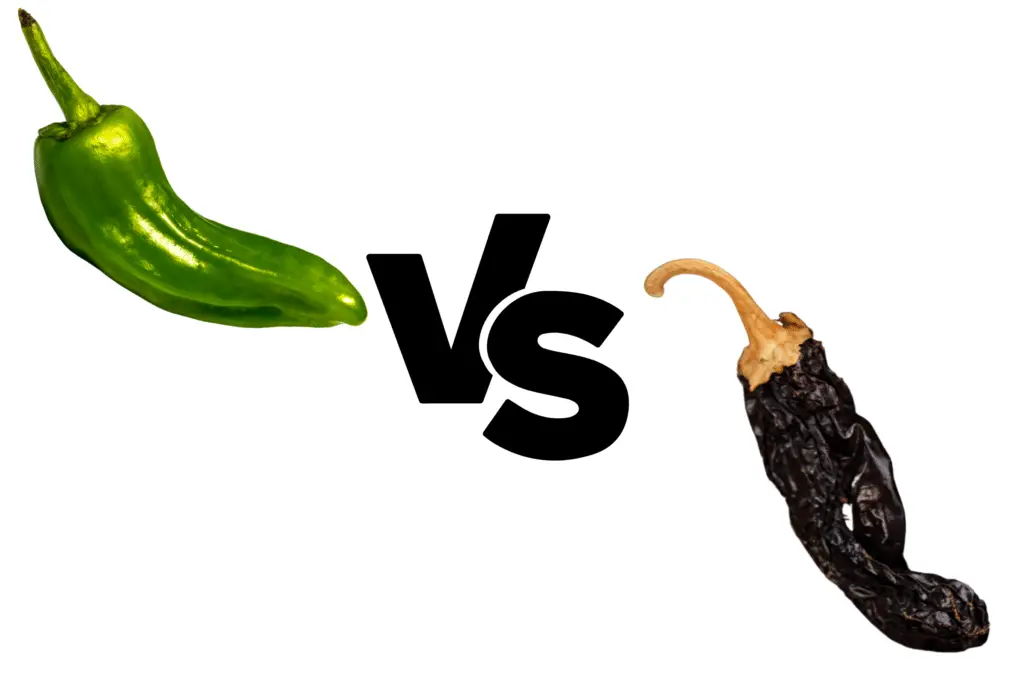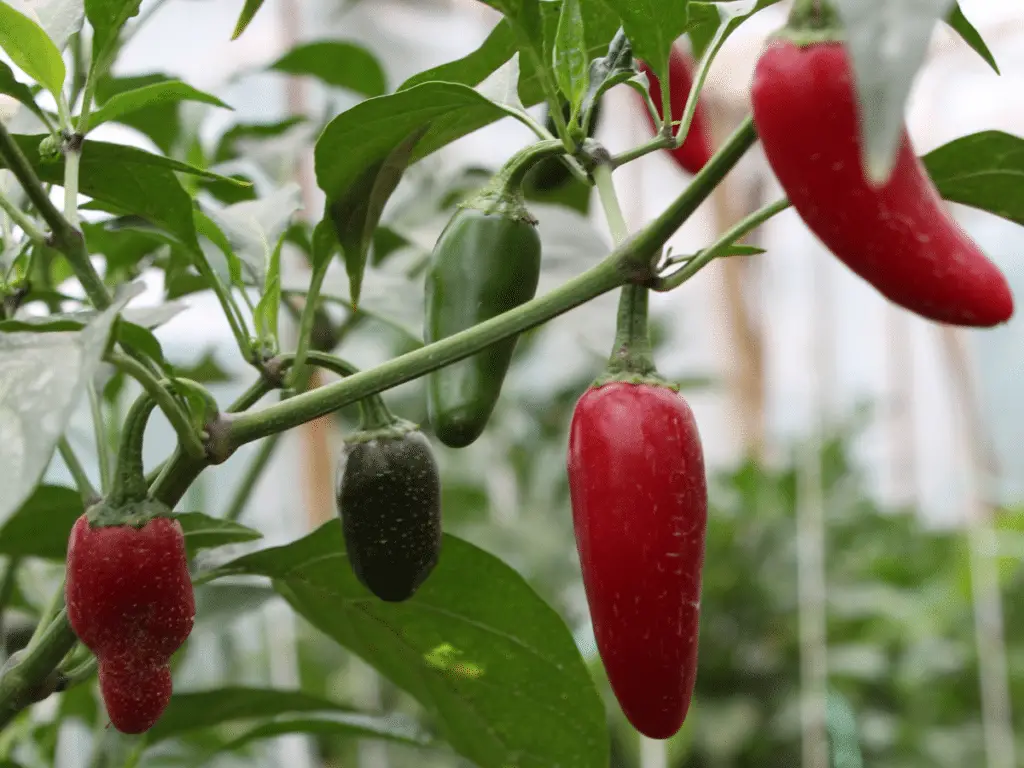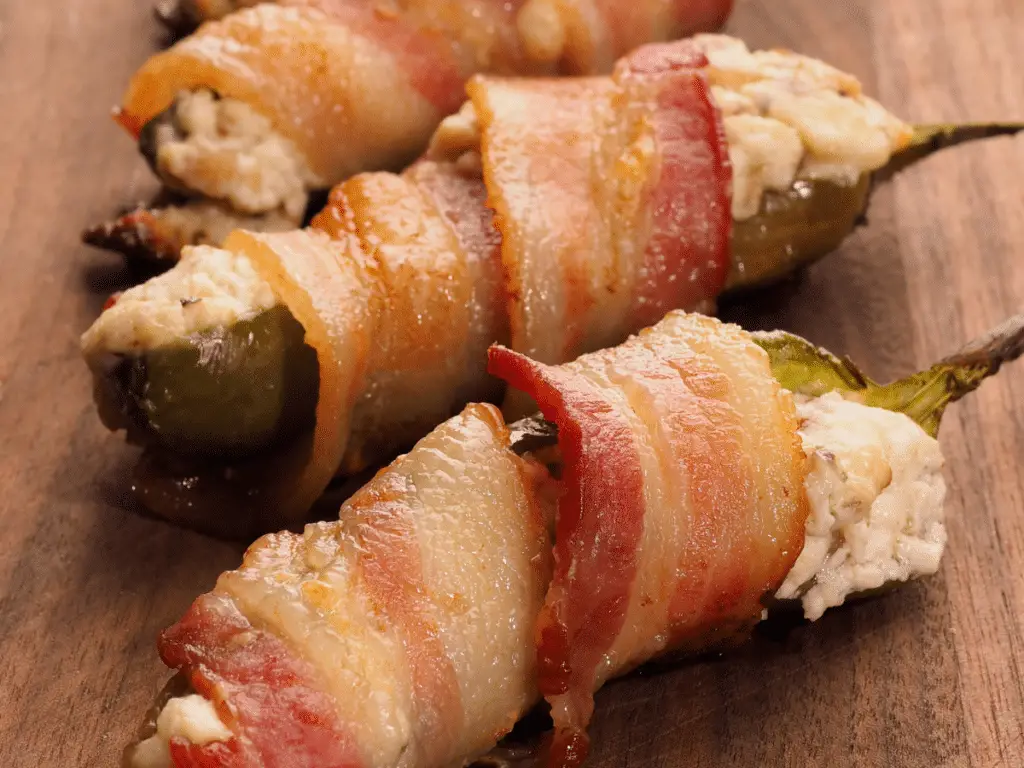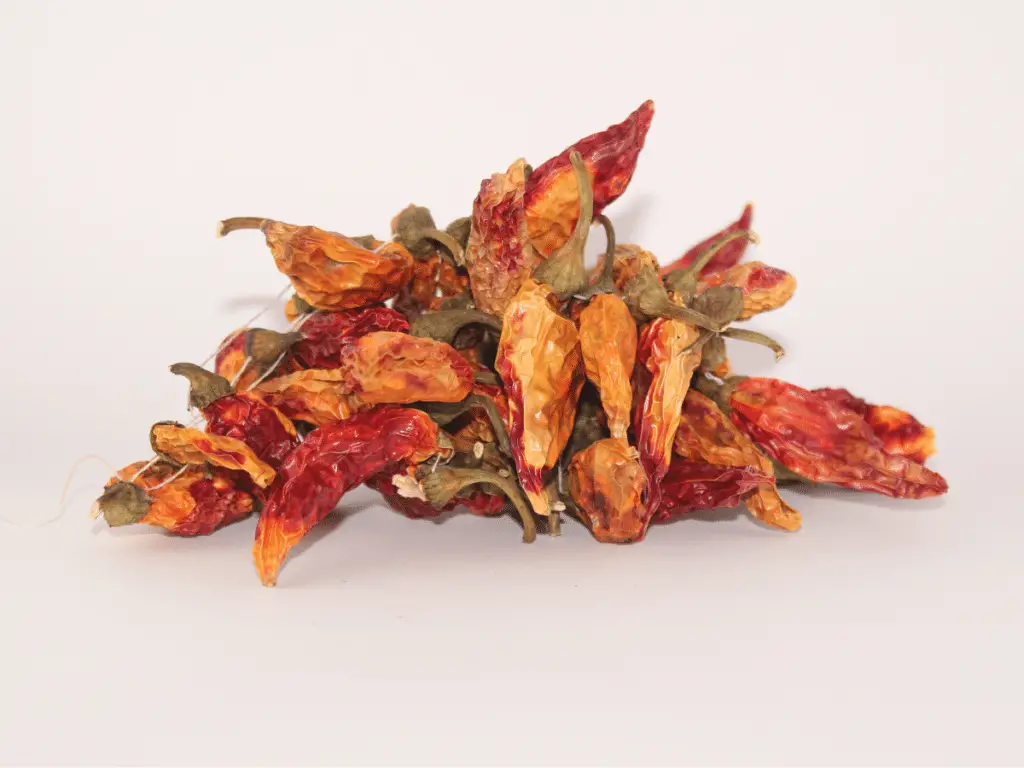On the surface, jalapeños and chipotle peppers don’t seem to have much in common, but they’re more alike that you might think.
Jalapeños are sweet, spicy peppers that are very popular and pretty accessible. Chipotle peppers are dried jalapeños and have a similar heat and flavor profile, although they also have smoky overtones. Jalapeños are sold fresh and pickled in most grocery stores; chipotle is usually bought ground although they can be found whole in specialty stores.
Read on for an in-depth look at jalapeños and chipotle peppers!
Comparison – Differences between jalapeño peppers and chipotle peppers
Jalapeños are a popular pepper because they’re spicy but not overwhelmingly so and they’re available fresh in many grocery stores. Even if you don’t keep fresh pepper around, you might be surprised to find you have the ground version in your spice cabinet – but it’ll be labeled chipotle powder.
Obviously one is fresh and the other is dried, but are there any other differences between jalapeños and chipotle peppers?

Let’s take a detailed look at the similarities and differences between jalapeño and chipotle peppers based on the following criteria:
- Jalapeños vs chipotle peppers heat level
- Jalapeños vs chipotle peppers flavor
- Jalapeños vs chipotle peppers texture
- Jalapeños vs chipotle peppers size and shape
- Jalapeños vs chipotle peppers nutrition
- Jalapeños vs chipotle peppers cost and availability
- Unique difficulties
- Substitutions
| Criteria | Jalepeño Pepper | Chipotle Pepper |
|---|---|---|
| Heat level | 2,000-8,000 SHU | 2,500-8,000 SHU |
| Flavor | Sweet and bright | Smoky and slightly sweet |
| Texture | Smooth with a tough skin | Slightly wrinkled |
| Size | 2-3″ | 2-3″ |
| Shape | Rounded cones | Cones |
| Nutrition (per 100g) | 29 Calories 144% DV Vitamin C | 326 Calories |
| Substitutions | Serrano pepper | Dried chili pepper |
Jalapeños vs chipotle peppers heat level (in Scoville heat units)
Jalapeño peppers have a Scoville heat unit rating of 2,000-8,000. Chipotle peppers have a rating of 2,500-8,000.

Chipotle peppers start as red jalapeños, which are the more ripe, spicier version of the pepper. They may seem hotter because they are dehydrated and basically nothing but spice.
Jalapeños vs chipotle peppers flavor
Chipotle peppers are smoky with a hint of sweetness. Jalapeño peppers have a strong sweet flavor. Both have a moderate amount of spice.
Jalapeños vs chipotle peppers texture
Jalapeño peppers are smooth as butter. Chipotle peppers are wrinkly, an obvious indication of the dehydration process.
Jalapeños vs chipotle peppers size and shape
Jalapeños and chipotles are both 2-3 inches long, and they share a cone shape.

Jalapeños vs chipotle peppers nutrition
Like all peppers, jalapeños are low in calories and high in vitamin C.
Chipotle peppers have a comparable number of calories per pepper, although measuring by weight will show a significant difference. This is because of the chipotle pepper’s complete lack of water. A single jalapeño weighs in at 14 grams, while the dehydrated chipotle is only 4.3 grams.
Jalapeños vs chipotle peppers cost and availability
Chipotle peppers are pretty easy to find in the canned goods section for a cheap price, and chipotle powder is almost always available in the spice aisle.

Jalapeños are readily available both fresh and pickled in most stores.
Unique difficulties
You have to be careful when cooking with jalapeños and chipotle peppers to avoid getting any spice in your eyes.
Both peppers also have a decent SHU range, meaning you can end up with a pepper about 4 times as spicy as expected! If you get the ground chipotle powder, the heat will level out and most jars are likely to be similarly spicy.
Can you substitute jalapeño peppers for chipotle peppers or vice versa?
If you’re just looking for heat, you can probably get away with substituting jalapeños with chipotle peppers or powder, although the reverse won’t work.
I don’t recommend using them interchangeably – you’re better off finding a closer substitute in the form the recipe calls for.
Jalapeño peppers – a complete overview
Jalapeños are an incredibly popular pepper. Unless you’re completely opposed to any kind of spice, you can probably handle a jalapeño. Let’s dive in and find out all about them!

Heat
Jalapeños have an SHU rating between 2,000-8,000.
Color is the best way to tell how hot a jalapeño is. Jalapeños grow red as they mature, and at the same time, their capsaicin levels increase – hence making them spicier!
Size won’t help you much if you’re trying to figure out how spicy a jalapeño is.
Flavor
Jalepeños aren’t just good for heat – they’re also a great way to add a pop of sweetness to your dish!

Jalapeños are sweet, flavorful, and spicy.
Personally, I like to use the green pepper in my salsa, then cut up a red jalapeño to spread over the top of my nachos.
Size, shape, and texture
Jalapeños are typically 2-3 inches long.
They’re very smooth and have a rounded cone shape.
Nutritional content and potential health benefits
- 26 calories
- 10% DV dietary fiber
- 177% DV Vitamin C
- 20% DV Vitamin B6
A few potential jalapeño health benefits include:
- Metabolism boost
- Anti-cancer properties
- Pain relief
- Anti-inflammatory
- Good for heart health
Cooking with jalapeño peppers
While they originate in Mexico, jalapeños have made their way into cuisines around the world. You can saute them, grill them, roast them, blister them, and more! They’re also common as a pickled topping.

Jalapeño poppers are a classic appetizer, but have you tried them wrapped in bacon? It’s next-level delicious!
Substitutions for jalapeño peppers
Serrano peppers are a good substitution for jalapeño peppers. They both have a similar taste and spice level.
Freezing, drying, and preserving jalapeño peppers
Pickled jalapeños don’t have to be bought at the store – they can be made at home!
Other ways to preserve your jalapeños include freezing, drying, or canning them.
Chipotle peppers – a complete overview
Chipotle peppers are commonly used in Mexican cuisine, although you’re probably not as immediately familiar with them as you are with their fresher siblings. Let’s see what we can do that change that!

Chipotle peppers begin their lives as jalapeños. Once ripe, the peppers are strung up and smoked at a low temperature until they are completely dehydrated. This process is what adds the smoky overtones to the sweet flavor of the jalapeño.
Heat
Chipotle peppers have a range of 2,500-8,000 SHU.
Flavor
Chipotle peppers have a complex flavor – smoky with sweet undertones.
Size, shape, and texture
Chipotle peppers are 2-3 inches long.
They have a cone shape with slight wrinkles.
Nutritional content and potential health benefits
Chipotle peppers are high in Vitamin C and low in calories.
Chipotle peppers potential health benefits include:
- Anti-inflammatory
- Anti-cancer
- Increased metabolism
- Good for heart health
Cooking with chipotle peppers
Chipotle peppers are most often made into Adobo sauce or used as a spice.

Substitutions for chipotle peppers
Poblano peppers are a good substitute for chipotle peppers if you’re looking for that smokiness, whereas jalapeño peppers can bring a similar heat. Unfortunately, both of these peppers are much more plump and full of water, which is likely to change the function of the recipe.
If you can get ahold of them, dried Anaheim peppers or ancho peppers (aka dried poblano peppers) will give the smoky flavor and a similar level of heat.
Want to know more about Anaheim peppers? Check out this article to see how the fresh pepper compares stacks up to our beloved jalapeño.
If you’re looking for a chipotle powder substitute, you can go for either good old-fashioned chili powder or smoked paprika with a dash of cayenne for heat. The flavor won’t be exact, but it’ll get you there.
Freezing, drying, and preserving chipotle peppers
Since chipotle peppers are already in their preserved form, freezing them isn’t recommended. At best, it won’t make much of a difference; at worst, it could add unwelcome liquid to the pepper.
To make more space or to make the pepper more useful in most recipes, you may want to consider grinding your peppers into chipotle powder and storing them that way.

